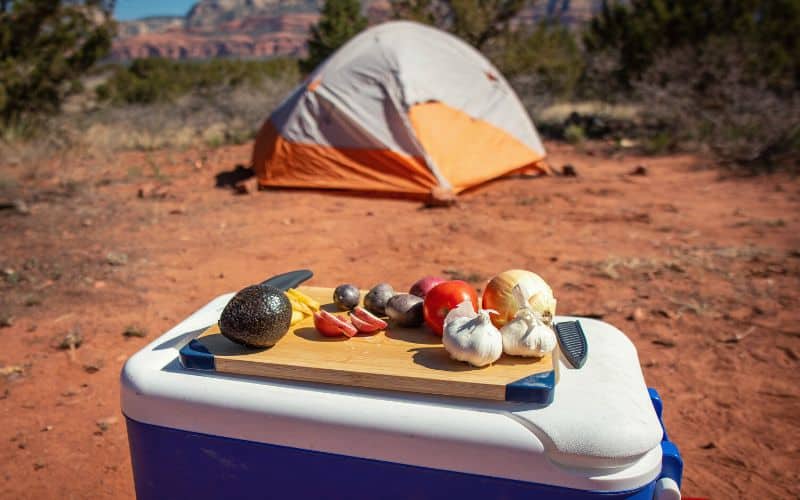Nothing is worse than returning to camp and realizing an animal has torn up your gear while looking for food. It can be enough to ruin a trip and send everyone home early. The good news is, keeping your foodstuffs away from animals and insects isn’t difficult; it takes a little know-how, however.
That’s where we come in. This guide breaks down how to store your food on any camping trip, including at established, backcountry, and dispersed campgrounds. We’ve even included expert tips on how to keep your cooler extra cold and for handling food while outside. Take a look!
Table of Contents
Proper Food Storage When Camping: All You Need to Know
The Importance of Proper Food Storage When Camping
Proper food storage is essential to keeping wildlife wild. When animals realize humans have food, they lose their natural fear and avoidance behaviors. Animals that aren’t afraid of humans are a threat to themselves and people. For example, bears that won’t leave people alone must be put down.
Appropriate storage will also save your gear from getting chewed up or bug-ridden and ensure your planned camping meals come to fruition.
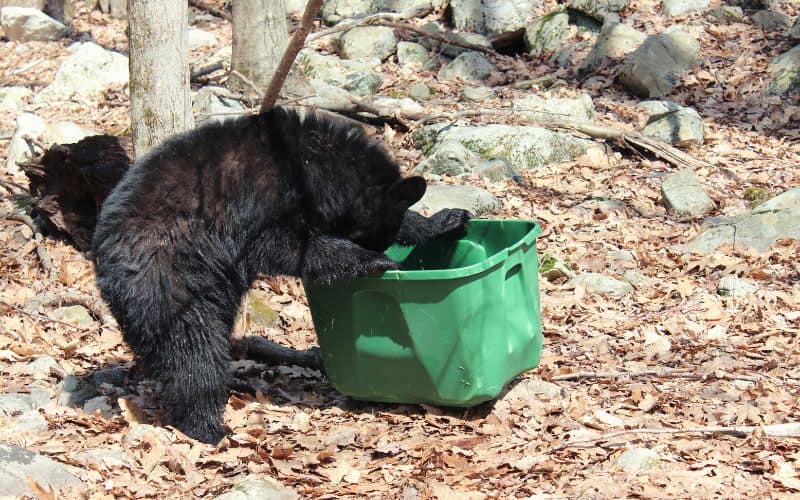
Food Storage in Maintained Campgrounds
Most maintained campgrounds have established locations for keeping your edibles and smelly items safe and secure. We recommend keeping your food stashed at all times, including when you’re in camp.
Food left out can still attract animals and bugs. Ravens, chipmunks, and other critters are fans of human edible treats and bold enough to swoop in and grab something the second you turn your back. So, keep everything closed up unless you’re actively cooking and watching your supplies.
The best way to do that is in a provided metal box/locker, a bear-resistant cooler, or your car. (More on those next.)
Metal Bear Box/Lockers
Bear boxes and food lockers are specifically designed to keep bears out. This means they are external hinge-free, reinforced, and bolted to the ground. Most importantly, they close with a bear-proof latch. The latch systems are constantly evolving as bears learn how to open them.
Before you go on a hike or go to sleep, place all foodstuffs, scented toiletries, and trash into the locker and securely close it. Be aware that the metal boxes are communal, so label your things and be courteous to other users.
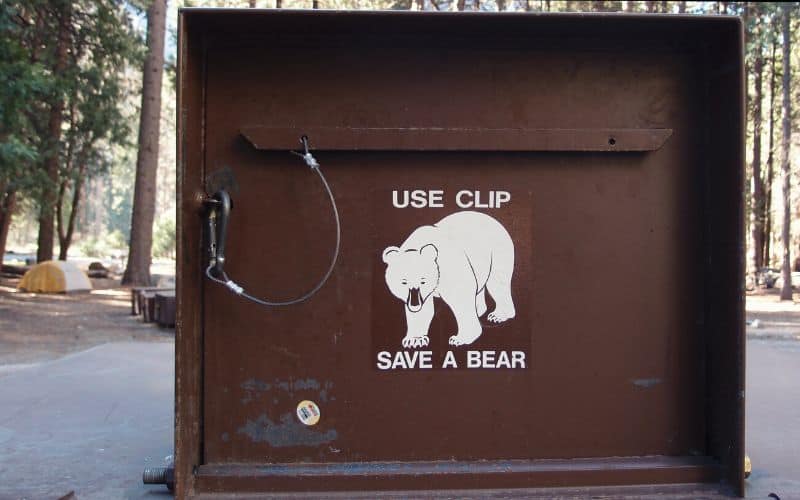
Bear-Resistant Coolers
Camping coolers that claim to be bear-resistant undergo Interagency Grizzly Bear Committee (IGBC) testing, which includes captive grizzlies and other technical evaluations. If the product withstands the bear’s attempts to access the contents, it is deemed bear-resistant.
Officially certified, bear-resistant coolers are perfect for car or RV camping in bear country. Store the closed and locked cooler away from your sleeping area. You can also store it in your vehicle but be aware bears have been known to break into cars.
Backcountry Food Storage
You might find metal bear boxes at some hike-to campgrounds and designated backcountry campsites. However, in most cases, food storage containers for backcountry camping are more transportable. Ensure you know and adhere to the storage regulations for where you’re traveling. Generally, there are a couple of ways to store your eats in the backcountry.
Bear Bags
Bear bags are made of claw-resistant polyethylene. Even persistent bears won’t be able to rip open a bear bag, and the polyethylene material minimizes tasty-smelling odors, meaning bears and other critters are less likely to find it in the first place.
To use a bear bag, place your foodstuffs inside and carefully close the bag according to the manufacturer’s instructions. Bags can be left on the ground, but we recommend hanging them up. You never know when a bear might carry your bag away. When hanging your bear bag, make sure it’s at least 10 feet from the trunk and 15 feet off the ground.
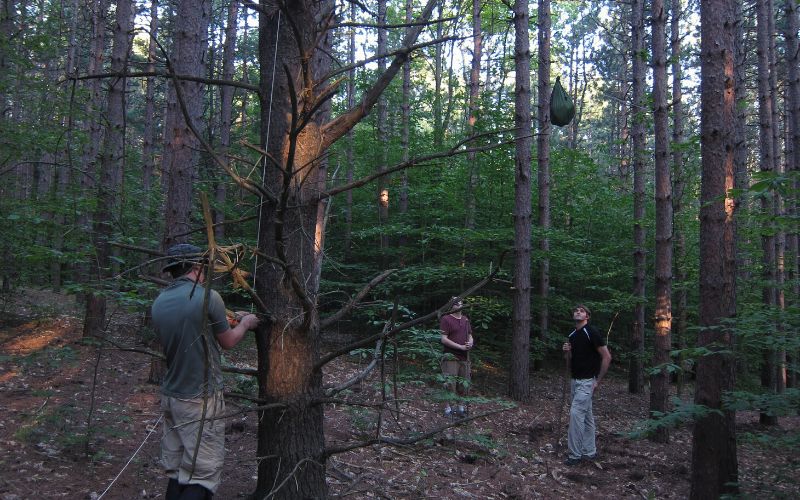
Bear Canisters
You will have to carry a bear canister in areas that don’t accept bear bags. The good news is you can usually rent canisters. Although they are heavier, they are virtually impenetrable, and unlike a bag, there’s no chance of your eats getting squished by a frustrated bear.
Bear canisters are easy to open and close (for humans). Simply place food, trash, and smelly items in the canister and screw and lock the lid. Then place the canister at least 100 feet from your sleeping area.
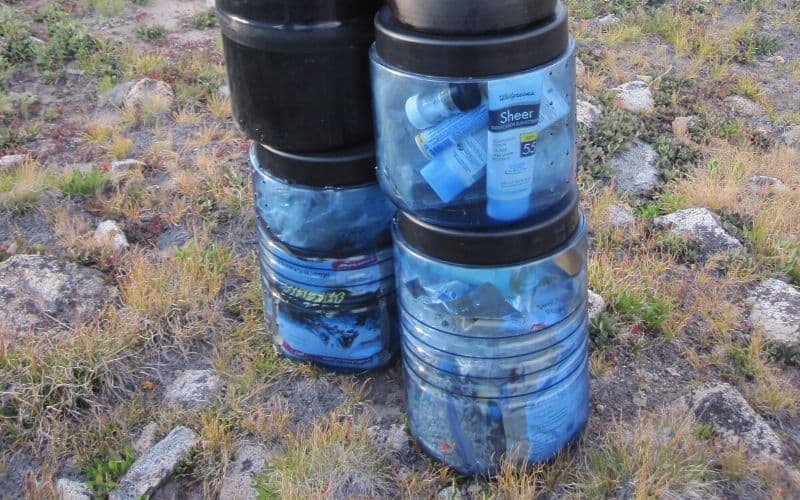
Tips for Handling and Storing Food While Camping
Being in the great outdoors is not an excuse to forgo basic hygiene practices. You should be as careful handling, preparing, and storing food as you would at home. Here are a few expert tips for keeping yourself and your meals safe while camping. First, always wash your hands before handling food. If there is no access to running water, use hand sanitizer or moist towelettes. When cooking, make sure to use separate cutting boards and utensils for raw and cooked foods to avoid cross-contamination. Additionally, easy meal ideas for camping include things like pre-made sandwiches, grilled chicken skewers, and pasta salads, which require minimal preparation and cooking time, making it easier to maintain proper hygiene practices while enjoying the outdoors.
Practice Good Handwashing
This might be obvious, but it is worth repeating. Handwashing is essential to avoiding bacteria and pathogen transmission. Who knows what kinds of things are on your hands after a day hiking, picking up rocks, and using campground latrines. In other words, wash your hands!
Of course, you should wash your hands after using the bathroom. But it’s just as important to thoroughly wash your hands before entering the camp kitchen, handling food, or helping with dishes. When soap and water aren’t available, be generous with hand sanitizer or wipes.
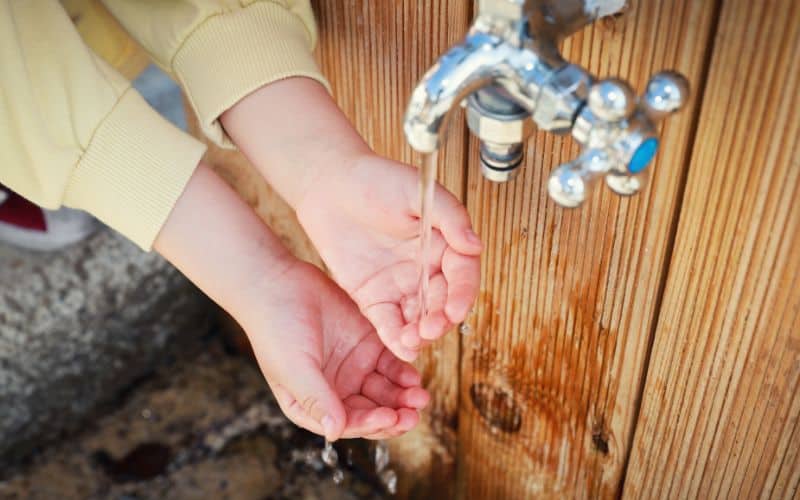
Pre-cut Meat
If your favorite camp meal involves meat, save the hassle and risk of handling raw meat and pre-cut everything at home. This way, you have hot, running water to disinfect anything that comes in contact with raw meat.
To store your prepped meat, put it in a well-sealed Tupperware, trash bag, or double bag it in Ziploc bags to ensure meat juice doesn’t leak out and contaminate the rest of the cooler.
You can take this a step further and pre-cook your meat. This eliminates the chance of cross-contamination in the cooler or during the cooking process. Cook and season everything as you normally would, and store it in a plastic container or sealed bag in your cooler.
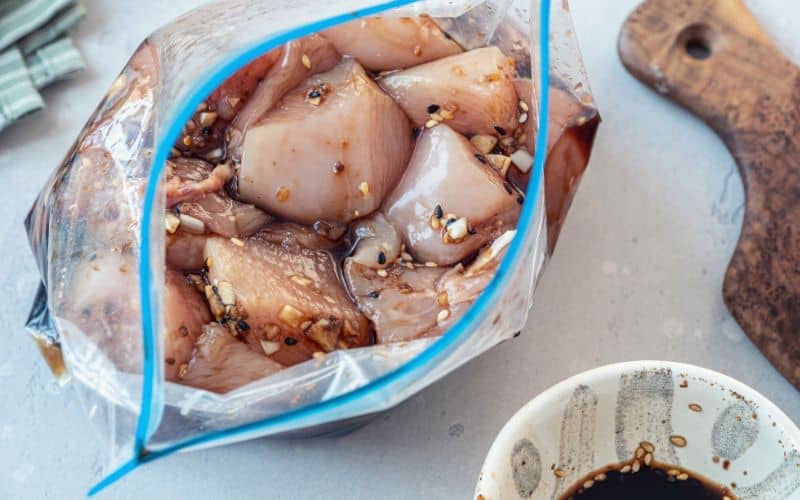
Keep Perishables Cold
For long camping trips, it’s important to keep your perishables as cold as possible. This is tricky, especially on hot summer days. Check out the following tips for keeping your cooler cold and your food fresh:
- Start cold – Starting with a cold cooler makes a big difference. To achieve a pre-chilled cooler, you will have to sacrifice a bag of ice. (Unless you have access to a walk-in fridge or freezer.) Once chilled, the cooler will hold ice for much longer, and you can begin packing your edibles.
- Freeze liquids – Transfer liquids like orange juice or milk to reusable bottles and freeze them before packing. (Don’t forget to leave room for expansion.) The frozen drinks will help keep the cooler cold, and you can use the liquid as it melts.
- Pack with the menu – Put your last night’s meal at the bottom of the cooler; if you can freeze it first, even better. The first night’s dinner should be thawed at the top of your cooler.
- Track the temperature – A thermometer inside the ice chest can help you track the temperature and ensure things aren’t getting too warm. Most perishables, including milk, eggs, and raw meat, must be kept at least 40 degrees Fahrenheit.
- Follow the shade – Keep your cooler in the shade as much as possible. This might mean keeping it under your picnic table or hidden in a bush.
- Keep it closed – Besides being important for keeping animals out, properly closing and sealing the cooler helps maintain the temperature inside.
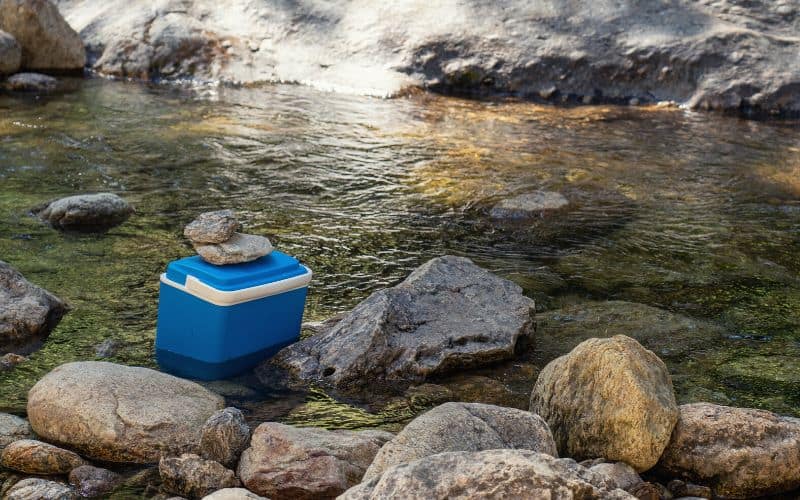
Mind Your Trash
Trash takes on a new meaning in a campground or backcountry setting. Leftover wrappers, bottles, and food waste also attract animals, and improper storage or removal can jeopardize your food and wildlife safety. Good trash practices include the following:
- Re-package – Before heading out on your next camping trip, re-package your supplies into reusable containers. This eliminates waste from the get-go.
- Designate a spot – Trash and food should be kept in separate containers. Have a trash-specific bear bag or canister and store it in a different place from your edibles.
- Avoid pocket trash – A wrapper left in your pants pocket could bring a curious bear right up to your tent. Be diligent about where you put your trash, and always check your pockets before bed.
At established campgrounds, put all your waste in a designated bear-resistant dumpster and close it correctly. Pack everything out on backpacking and backcountry trips according to the Leave No Trace Principles.
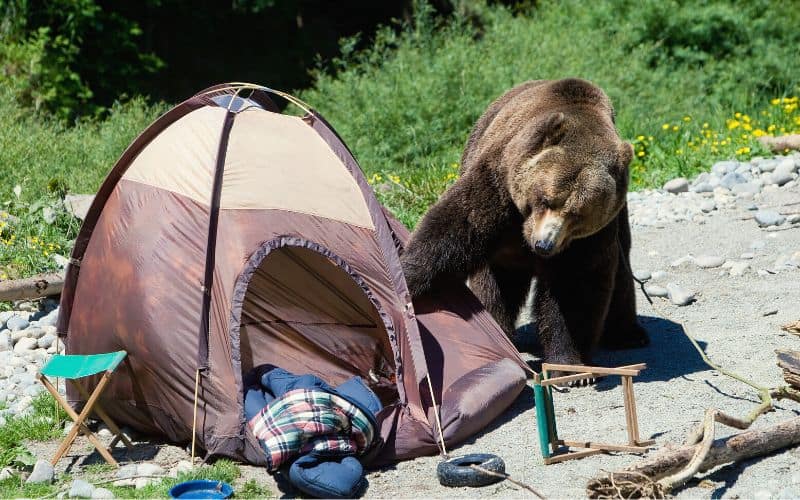
Collect Gray Water
Used dishwater, or gray water, is another odorous substance that can attract wildlife. Have a system for capturing your gray water and melted ice from your cooler. Dish tubs or a rinse bucket work well.
The next step is to strain the gray water to remove meal scraps that should then go into the trash. Some established campgrounds have a gray water-specific dump area. But for backcountry and dispersed camping, you should scatter gray water at least 200 feet from your camp area.
Camping Food Storage: Final Thoughts
Proper camping food storage is the difference between a hearty camp meal and a trip gone wrong. In worst-case scenarios, it can also be the difference between a wild bear and a dead one. We hope our guide to food storage methods makes keeping your eats safe a breeze, and we wish you many fulfilling camp meals to come.
If you enjoyed this post, let us know in the box below. And please feel free to share it with your friends!
